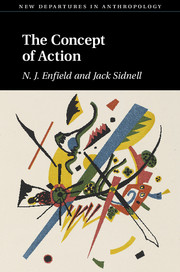Book contents
- The Concept of Action
- New Departures in Anthropology
- The Concept of Action
- Copyright page
- Contents
- Figures and Table
- Preface
- Acknowledgements
- Abbreviations
- Transcription Conventions
- Part I Preliminaries to Action
- Part II The Nature of Action
- Part III Action and Human Diversity
- Postface
- References
- Index
- References
References
Published online by Cambridge University Press: 29 September 2017
- The Concept of Action
- New Departures in Anthropology
- The Concept of Action
- Copyright page
- Contents
- Figures and Table
- Preface
- Acknowledgements
- Abbreviations
- Transcription Conventions
- Part I Preliminaries to Action
- Part II The Nature of Action
- Part III Action and Human Diversity
- Postface
- References
- Index
- References
- Type
- Chapter
- Information
- The Concept of Action , pp. 195 - 201Publisher: Cambridge University PressPrint publication year: 2017



